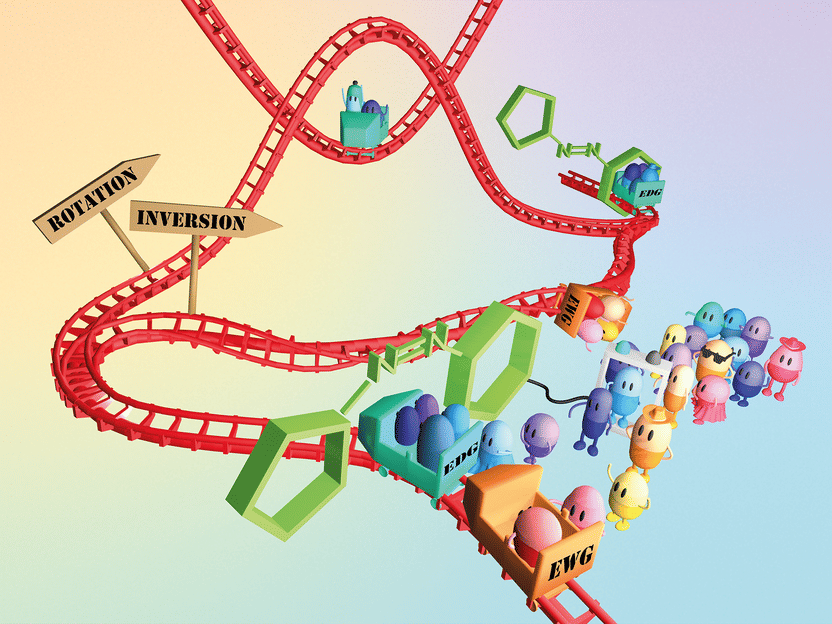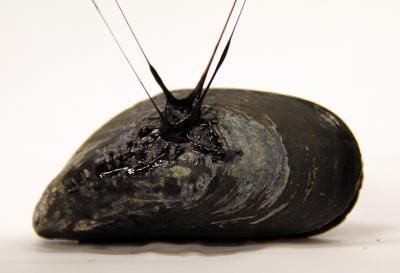The invasive green mussel may inspire new forms of wet adhesion
Advertisement
The green mussel is known for being a notoriously invasive fouling species, but scientists have just discovered that it also has a very powerful form of adhesion in its foot, according to a recent article in the Journal of Biological chemistry. The stickiness of the mussel's foot could possibly be copied to form new man-made adhesives.
Other mussels have inspired synthetic polymers that have been made into versatile adhesives and coatings, explained J. Herbert Waite, senior author and a professor in UC Santa Barbara's Marine Science Institute. They all rely on proteins that contain an amino acid called "Dopa," (identical to the Dopa used to treat Parkinson's disease) and have been studied extensively by Waite and his research group.
Waite learned that the green mussel, Perna viridis, relies on an alternative to the common "Dopa" chemistry, based on an elaborate modification of the amino acid tryptophan in the green mussel's adhesive protein. Its adhesive chemistry is much more complicated than that of mussels previously studied. It took Waite and his team six years to unravel the story.
The green mussel's sticky adhesiveness has the potential to help form strong bonds in wet surfaces, including teeth and bones. In addition, the adhesive could be used to repair ships that have developed cracks while at sea and must be repaired in a wet environment.
Waite was first alerted to the complicated adhesive of the green mussel when a Japanese group contacted him to comment on their research on the animal. He then learned of an infestation of green mussels in Tampa Bay, Fla.
On further study, he learned that the aggressive green mussel had moved from India's Sea of Bengal to many locations around the world, including the coasts of Japan, Australia, Korea, China, the Philippines, and Indonesia. Additionally, many Pacific Islands and the coasts of some countries surrounding the Gulf of Mexico have been invaded. "People are interested in how they invade, adapt, and spread so easily," said Waite.
Waite asked the U.S. Geological Survey and Florida Sea Grant to send him frozen specimens from Tampa Bay, as this is the only way that California would allow the green mussel to be shipped into the state. The feet were severed from about 100 freshly shucked mussels. After thawing, they were placed in a tissue grinder and then centrifuged for study.
"One aspect that is kind of scary is that the green mussel is more successful than other kinds of mussels at living in polluted water," said Waite. Coastal power plants that flush warm seawater into the ocean provide an ideal environment for the mussels. "Once they get a foothold, they stay."
Most read news
Topics
Organizations
Other news from the department science
These products might interest you

Dursan by SilcoTek
Innovative coating revolutionizes LC analysis
Stainless steel components with the performance of PEEK - inert, robust and cost-effective

OCA 200 by DataPhysics
Using contact angle meter to comprehensively characterise wetting behaviour, solids, and liquids
With its intuitive software and as a modular system, the OCA 200 answers to all customers’ needs

Tailor-made products for specific applications by IPC Process Center
Granulates and pellets - we develop and manufacture the perfect solution for you
Agglomeration of powders, pelletising of powders and fluids, coating with melts and polymers

Get the chemical industry in your inbox
By submitting this form you agree that LUMITOS AG will send you the newsletter(s) selected above by email. Your data will not be passed on to third parties. Your data will be stored and processed in accordance with our data protection regulations. LUMITOS may contact you by email for the purpose of advertising or market and opinion surveys. You can revoke your consent at any time without giving reasons to LUMITOS AG, Ernst-Augustin-Str. 2, 12489 Berlin, Germany or by e-mail at revoke@lumitos.com with effect for the future. In addition, each email contains a link to unsubscribe from the corresponding newsletter.
Most read news
More news from our other portals
Last viewed contents
Drug_Master_File
Serious_adverse_event
Clinical_baseline
Effect_size
Spodumene
Valinemia

Tiny switches, big effect - Mechanism of photoswitches decoded - with potential for medicine, materials and electronics


































































